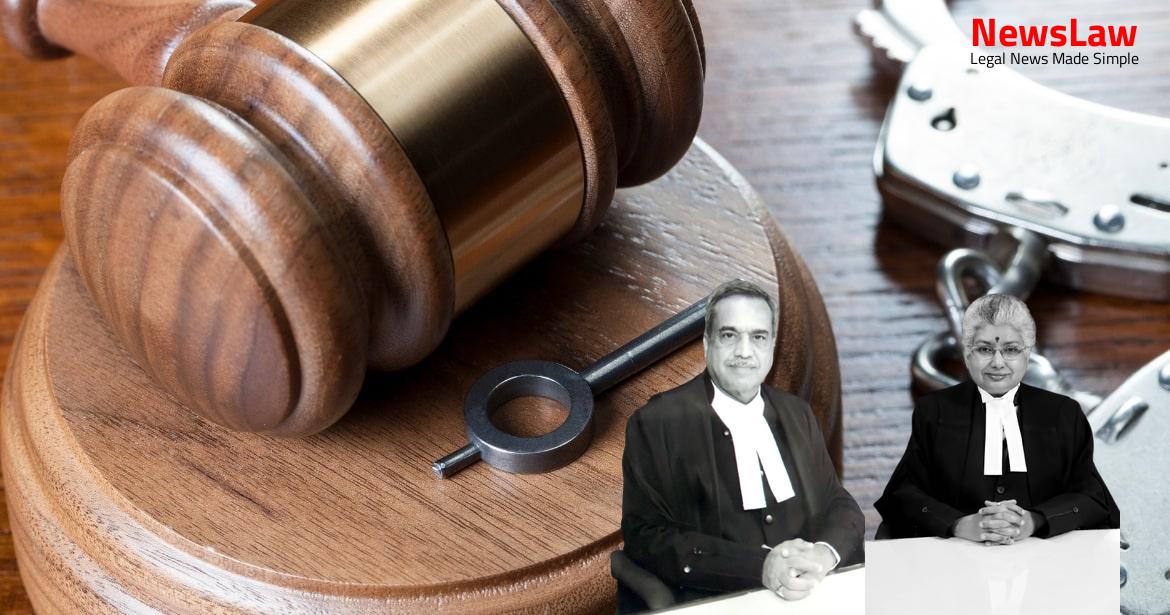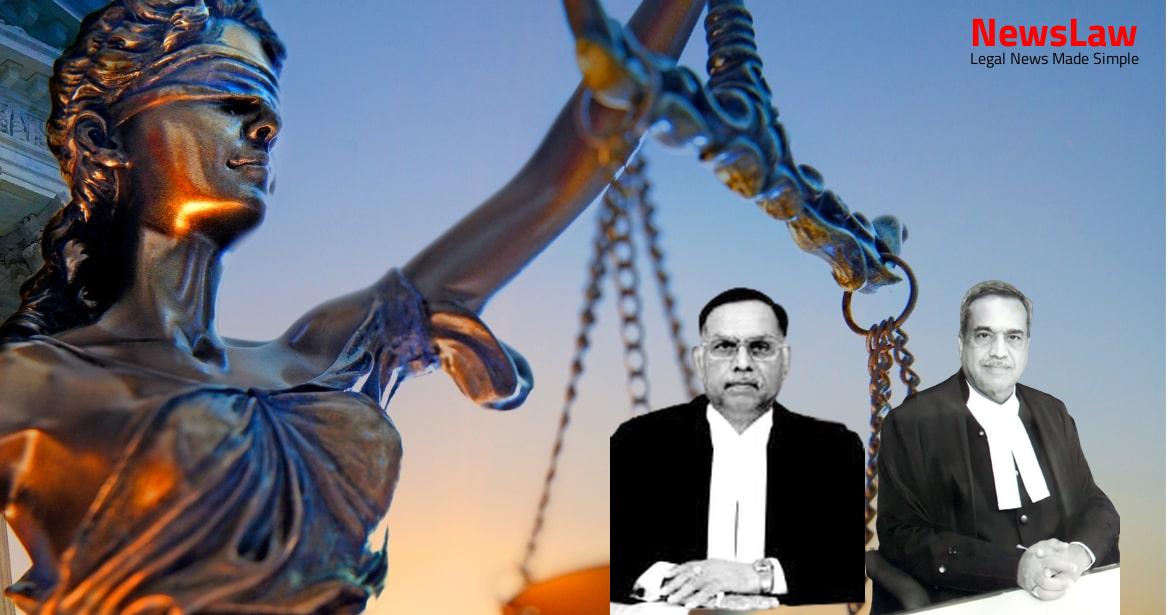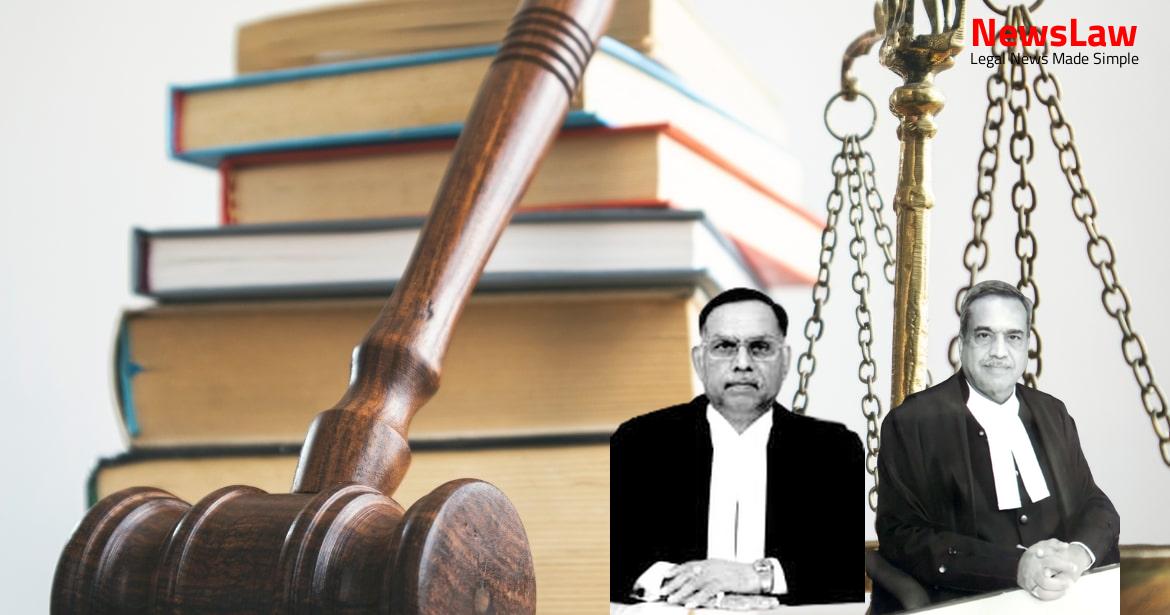Overturning the same in respect of A-1 to A-5 and A-7, the Court while convicting them for having committed an offence punishable under Sections 143, 144, 146, 147, 148, 447, 324, 326, 504 and 506 r/w Section 149 of Indian Penal Code, 1860 sentenced each one of them to undergo rigorous imprisonment for a period of 4 years and pay a fine of 5000 each. PW2, PW4, PW5 and PW10 managed to escape but while the deceased, was attempting to do so, he was greviously assaulted by A1, A2 and A3 by means of iron rod and a steel edged weapon (chopper). The accused did not lead any evidence save and except producing five witnesses to contradict the version of PW 4, Gopala Reddy (PW5), Chandrappa (PW15), T.V Krishnappa (PW17) and T.S Ramakrishna (PW13) respectively. PW3 has deposed that he had seen the accused persons assaulting the deceased, and it is they who had laid the deceased, post such assault, on the eucalyptus leaves on the fields of PW11. 4.3
In respect of the medical evidence furnished, it was observed that PW1 admitted non stating of who furnished history of injuries- whether it was injured himself or another person who had brought him to the hospital. A No 866 of 2011] Court, found to be a conduct, against of a prudent person who proceeded as normal, despite hearing of a conspiracy to kill a fellow man. 4.5 On recovery of weapons, the Court observed that although the weapons had been recovered at the instance of accused persons – clubs at the instance of A10, A3, A5, A6 and A7; iron rod at the instance of A1 and A2 and chopper at the instance of A4, but doubted the veracity of the seizure on the ground that the clubs were recovered from a place of common access and the chopper as well as the rods were recovered from places where others also resided. 4.8 In view of such findings, the court acquitted all accused persons. The Court found :- 7.1 The dying declaration makes a clear case against A1 to A7; 7.2 The injuries sustained by the deceased correspond to narration of the incident to PW19 (S. Ramappa S/o Narayanappa Acquitted Convicted u/s 304 Part II, IPC 4 years RI and fine of Rs.
Manjunatha S/o Ramappa Acquitted Convicted u/s 304 Part II, IPC 4 years RI and fine of Rs. Dyavappa S/o Narayanappa Acquitted Convicted u/s 304 Part II, IPC 4 years RI and fine of Rs. Narayana Swamy @ Beema S/o Munegowda Acquitted Acquitted 13. Narayana Swamy S/o
Pillappa Acquitted Acquitted 15. Ramesh S/o Mune Gowda Acquitted Acquitted 21.
Proceeding further, we notice, that this is a case involving primarily a dying declaration made by the accused in addition to the ocular and circumstantial evidence. Section 32 the Indian Evidence Act, 1872 relates to statements, written or verbal of relevant fact made by a person who is dead or who cannot be found, in other words, dying declaration. Emperor explained the phrase “circumstances of the transaction” as under:- “The circumstances must be circumstances of the transaction : general expressions indicating fear or suspicion whether of a particular individual or otherwise and not directly related to the occasion of the death will not be admissible. Such a statement might indeed be exculpatory of the person accused. ‘Circumstances of the transaction’ is a phrase no doubt that conveys some limitations. In this respect, as indicated above, the Indian Evidence Act, in view of the peculiar conditions of our society and the diverse nature and character of our people, has thought it necessary to widen the sphere of Section 32 to avoid injustice. For instance, where the death takes place within a very short time of the marriage or the distance of time is not spread over more than 3-4 months the statement may be admissible under Section 32. (3) The second part of clause (1) of Section 32 is yet another exception to the rule that in criminal law the evidence of a person who was not being subjected to or given an opportunity of being cross-examined by the accused, would be valueless because the place of cross- examination is taken by the solemnity and sanctity of oath for the simple reason that a person on the verge of death is not likely to make a false statement unless there is strong evidence to show that the statement was secured either by prompting or tutoring. 11.5 In order to rely on such a statement, it must fully satisfy the confidence of the court, since the person who made such a statement is no longer available for cross- examination or clarification or for any such like activity. This is the reason the court also insists that the dying declaration should be of such nature as to inspire full confidence of the court in its correctness.” 11.5.3 However, a note of caution has also been sounded. However, equally, it has been held that if witnesses present, while the statement is being made, state that the deceased while making the statement was in a fit state of mind, such statement would prevail over the medical evidence.
It has also, however, been held in Laxman (supra) that the mere absence of a doctor’s certificate in regard to the “fit state of mind” of the dying declarant, will not ipso facto render such declaration unacceptable. In case there are circumstances wherein the declaration had been made, not voluntarily and even otherwise, it is not supported by the other evidence, the court has to scrutinise the facts of an individual case very carefully and take a decision as to which of the declarations is worth reliance.” 11.7.2 This Court, in Jagbir Singh v. To this effect in Jayamma (supra), this Court observed : “…law does not compulsorily require the presence of a judicial or executive Magistrate to record a dying declaration or that a dying declaration cannot be relied upon as the solitary piece of evidence unless recorded by judicial or executive Magistrate.
A
No 866 of 2011] 11.9.2 In fact, the Constitution bench in Laxman reiterated this principle, stating: – “Marely because a dying declaration does not contain the details of the occurrence, it cannot be rejected and in case there is merely a brief statement, it is more reliable for the reason that the shortness of the statement is itself a guarantee of its veracity.” 11.10 Examination of the person who reduced into writing, the dying declaration, is essential. If it is in writing, the scribe must be produced in the Court and if it is verbal, it should be proved by examining the person who heard the deceased making the statement.” and; In Sudhakar v. The principle is that if the eyewitness testimony is “wholly reliable”, then the court can base conviction thereupon. State of Haryana this court has, referring to various earlier judgments, summarised the principles relating to circumstantial evidence. When we were doing our work in our land, at about 9.30 AM, the sons of bacchanna of our village namely (1) Manjunath, (2) Ramegowda (3) Rayappa S/o Narayanappa sons of Bacchanna (4) Ramesh s/o Chikkavenkatarayappa (5) Manjunatha (6) Ramanjanappa (7) Dyavappa S/o Narayanappa (8) Dyavappa S/o Chikka Munishamappa and others formed unlawful assembly and holding deadly weapons in their hands, came to our land and abused myself and my brothers in filthy language and assaulted with weapons. I also tried to escape from the Accused, at that time Manjunath forcibly assaulted with iron rod at my head, I fell down and immediately Ramesh assaulted me with sickle at my legs, Ramegowda assaulted me with sickle at right leg. I was present and also endorsed that statement in Ex.P.1 statement now marked, Ex.P.1 (a) is my endorsement and Ex.P.1 (b) is my signature” and PW19 stated “I rushed to the hospital and enquired the injured 25- [Cr.
Since the deceased had sustained injury on his right hand also, he was not in a position to sign the same…” And PW1 stated in regards of the person who recorded the dying declaration as under :- “I cannot say by name designation of the police person who recorded the statement of the injured. The dying declaration was signed by thumb impression by the deceased but, it is not the case of the prosecution that the deceased was illiterate. Then why the thumb impression, remains a mystery casting a serious doubt about its authenticity or correctness of such declaration. In Sudhakar (supra) this Court has held that if the original dying declaration is lost and therefore not available, the prosecution could adduce secondary evidence in support thereof. A No 866 of 2011] 21.1 Prosecution has endeavoured to establish the guilt of the accused by way of ocular evidence through the testimonies of numerous independent witnesses. 21.2 PW-2 has not supported the prosecution and despite being declared hostile and cross examined extensively, nothing fruitful, benefitting the prosecution case could be elicited from his testimony. 21.3 On this issue we also take note of the testimony of PW-9 (mother of the deceased) who only states that in the hospital, the deceased informed her that the “accused persons before the Court” had beaten and wounded him but then this does not in any manner help the prosecution for the same is in the nature of not only 29-
[Cr.
On the fateful day, he has testified that a group of 25 to 30 persons holding weapons such as iron chains, sticks, and sickles came to the lands where he along with others, were working.
21.7 Having noted that no other witness has deposed the manner in which they saw the deceased laid on the eucalyptus leaves, similar to the manner as deposed by PW15, the trial court concluded that not much was to be gained from the ocular evidence on record. There is a contradiction in testimonies in regard to the number of persons who formed part of the unlawful assembly- one witness testified the presence of 50-60 persons while others testified to the group being of 25-30 persons; there is no clarity as to how the deceased ended up in the lands of PW11 – a material contradiction between two supposed eye-witnesses, PW3 and PW15. It is evident from a bare perusal of the testimony of PW15 that the deceased was seen by him in an already injured state, meaning thereby that he has not actually witnessed the accused persons assaulting the deceased. PW-4 is the brother of the deceased, but his conduct at best can be described as unusual, or it other words, one that defies logic. Significantly, in his cross-examination, he admits several improvements made by him; he does not remember having informed the police of the accused moving towards the village holding the weapons they had brought.
21.11 PW-19 admits that “on 06.08.1997, the AW2 to 10, 12 to 17 did not inform me as to who assaulted the deceased, where and how. What would be more relevant would be the consistency of the statement right from the starting point till the end, namely, at the time when the witness makes the initial statement and ultimately before the court. Only if the version of such a witness qualifies the above test as well as all other such similar tests to be applied, can it be held that such a witness can be called as a “sterling witness” whose version can be accepted by the court without any corroboration and based on which the guilty can be punished. To be more precise, the version of the said witness on the core spectrum of the crime should remain intact while all other attendant materials, namely, oral, documentary and material objects should match the said version in material particulars in order to enable the court trying the offence to rely on the core version to sieve the other supporting materials for holding the offender guilty of the charge alleged.” (emphasis supplied)
This was quoted with profit by this Court in Ganesan v State. On circumstantial evidence, the trial court has examined the testimonies of PWs 1-5, 10, 13 and 15. A No 866 of 2011] 24.3
Case Title: MANJUNATH Vs. STATE OF KARNATAKA
Case Number: Crl.A. No.-000866-000866 / 2011



